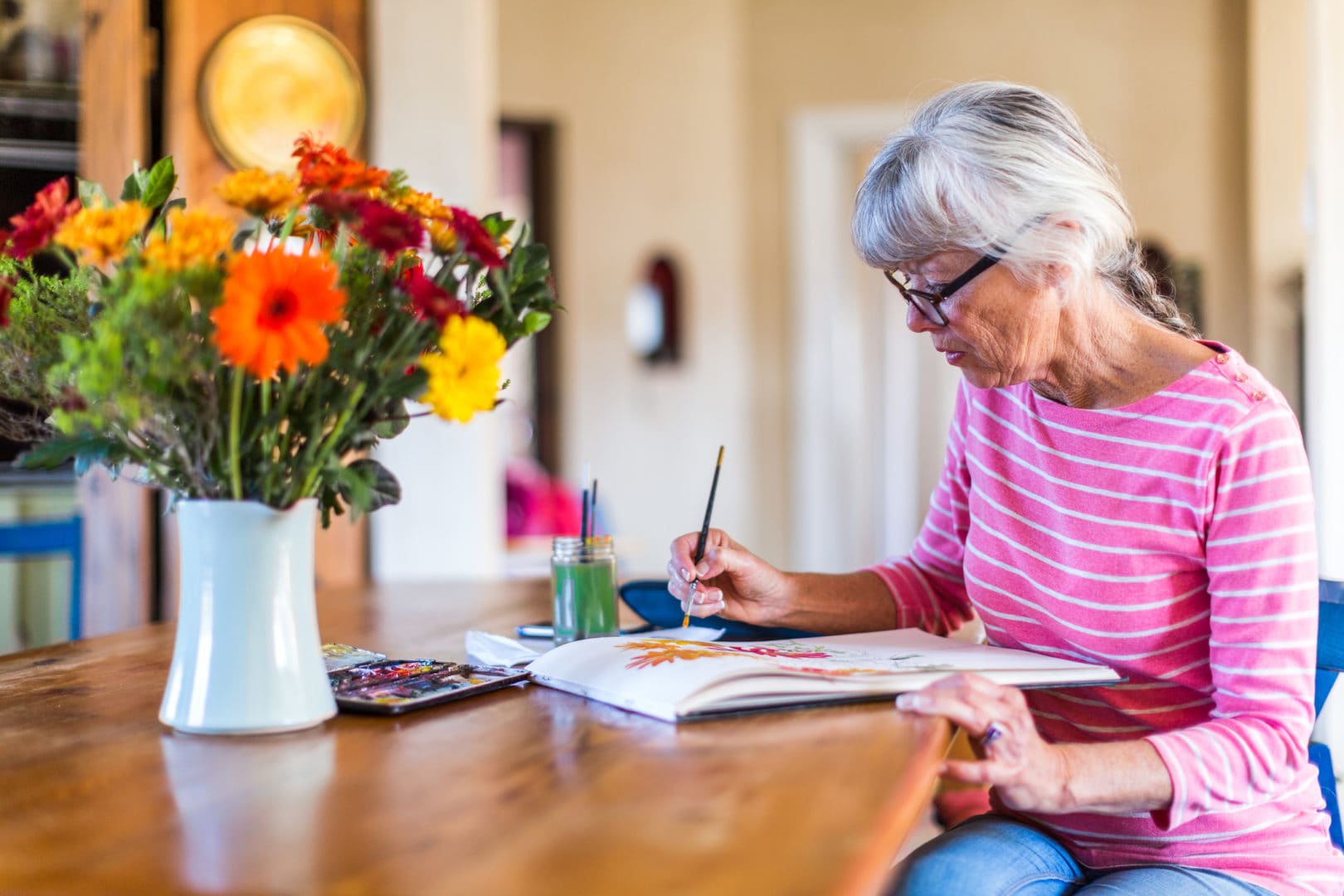Whether you’re a family caregiver or a professional, your primary job is to support an elderly person’s activities of daily living. But while healthy hygiene and nutrition are important, elderly people may also look to you for companionship, engagement and entertainment. This can present a challenge when you’re stuck indoors. But thinking creatively and trying something new is always worth the effort, as making time in your daily schedule for engaging, brain-boosting indoor activities can be beneficial to both elderly people and their caregivers.
Not sure where to start? Simply ask the elderly person in your care what interests them while taking their personality into account. An introvert may be drawn to quiet solo activities, for instance, while someone who previously worked in a creative field may appreciate artistic pursuits. After all, a one-size-fits-all approach doesn’t work for any age group – so try to understand each person’s wants and needs.
To get started, consider this list of enjoyable, must-try indoor activities.
Indoor activities for elderly people with limited mobility
Elderly people with limited mobility may be used to spending a lot of time indoors, and trying new activities can present a welcome break from their routine. Opt for uplifting activities that can be comfortably done while sitting in a chair or even in bed.
Explore arts and crafts
Research has shown that elderly people who create art show lower rates of hypertension and higher cognitive functioning than those who don’t. Art activities are ideal for all kinds of elderly people, including those with limited mobility. And you don’t have to be an artist to have fun with it – consider forgiving and expressive styles like watercolours or abstract art. You may be surprised at the results!
You could also try working with modelling clay, adult colouring books or collages. Or encourage art appreciation by facilitating virtual museum visits, watching documentaries or reading and discussing art-themed books.
Encourage story-telling
Anyone who has lived 65 years or more is bound to have some stories to share. For elderly people of sound mind, digging back into their memories and writing down their life stories can be an incredibly fulfilling and meaningful activity, and result in a story that can be passed down as a family keepsake. You can use online memoir-recording services, such as The Story Keepers or Spoken Memoirs, to get started.
Indoor activities for elderly people with cognitive challenges
Older adults who have been diagnosed with Alzheimer’s disease or dementia can connect and feel engaged by fun, “failure-free” activities that encourage a sense of accomplishment and connection. It’s important to take their ability level and stage of disease into consideration and adjust the activities appropriately.
Horticultural activities
You don’t necessarily have to go outside to experience the benefits of horticultural therapy. A study of elderly participants in Asia found that regular exposure to plants and natural environments was linked to positive psychological, social and physical health benefits. Create a container herb garden to place in a sunny window and enjoy harvesting fresh mint or chamomile for tea. With enough space, you may even be able to grow some fruits or vegetables indoors, such as cherry tomatoes or citrus. Consider the elderly person’s needs and abilities; if they don’t have a green thumb, turn towards low-maintenance plants like succulents and pothos.
Set up an at-home salon
For elderly people with dementia or other cognitive challenges, a bit of pampering can be highly therapeutic. Research has shown that massage and touch can serve as non-pharmaceutical ways to reduce or manage anxiety and depression in dementia patients. For instance, you could set up a DIY beauty salon for the elderly person in your care for the day, and do their nails, hair and make-up. Or, try a soothing hand massage.
Indoor activities for elderly people seeking companionship
Loneliness is a serious issue for many older adults. Losing friends and loved ones or simply living far from family can mean a serious lack of companionship that can lead to depression — but social connectedness can reduce feelings of depression, anxiety and suicidal ideation, as shown by at least one study.
Here are some ways that elderly people can connect from the comfort of their homes.
At-home volunteering projects
For elderly people with a heart for the community and for volunteering, projects focusing on supporting those in need can foster a sense of self-esteem and enjoyment. Look to organisations like Reengage for virtual opportunities like companionship phone calls, which connect volunteers with isolated elderly people whose mental health may benefit from hearing a friendly voice on the phone. Other opportunities include specific call companion services for elderly LGBT+ people and those living with Parkinson’s, as well as other services like conducting phone surveys.
Other organisations like Age UK, Restless and the Alzheimer’s society also provide a range of volunteering opportunities, such as sharing your own dementia story or campaigning online for better care.
Take part in a book club
Reading has so many mental health benefits for all ages. One study even found that adults who read books lived two years longer than adults who didn’t. Whether listening to an audiobook or reading the old-fashioned way, cracking open a book is a great solo activity, but it can also be social if you join a book club. Elderly people can create their own book group with friends or family, or join an existing virtual book club.
Consider your older adult’s interests to find an appropriate club. For instance, the Good Housekeeping Book Room offers constant online book chat in addition to its monthly pick.
The key to finding the best indoor activities for the elderly
As you take on activities together, pay close attention to your companion’s responses and be ready to make adjustments as needed. That way, you can adapt the level of difficulty as you go.
At the end of the day, listening to the interests, needs and wants of the elderly person in your care is key; let them guide you.
